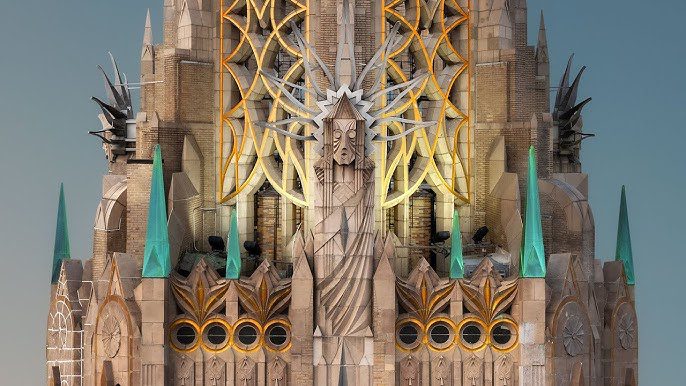Contents

Luca Moretti
Picture Manhattan in 1925. Jazz music flows from hidden speakeasies while construction crews work day and night. Above them, something remarkable takes shape—buildings that seem to reach for the stars, decorated with zigzag patterns and shiny metal details that sparkle in the sunlight. This is Art Deco architecture being born, a movement that changed how we see cities forever. From the most fascinating Art Deco buildings that still define skylines today to the Empire State Building’s Art Deco masterpiece status, these structures tell the story of an era when hope literally reached for the sky. The power of this revolutionary style continues to inspire modern spaces, with Art Deco hot trends still shaping contemporary design.
The story starts with Thomas Chen, a young elevator operator in the Chrysler Building in 1930. Each morning, brass doors would close behind him. He’d watch the city get smaller through the elevator windows while geometric patterns on the building’s face cast dancing shadows across his face. Thomas didn’t know it then, but he was experiencing how Art Deco buildings were changing not just skylines, but how people moved through and saw urban spaces.
When was the Art Deco architectural period?
The Art Deco movement rose from the ashes of World War I. It got its official name at the 1925 Exposition Internationale des Arts Décoratifs et Industriels Modernes in Paris. But its real birthplace was in the hearts of a generation hungry for progress.
The Birth of a Movement
Margaret Foster worked as a secretary in the newly built Niagara Mohawk Building in Syracuse. Years later, she remembered her first glimpse of the building’s dramatic front: “It was like someone had taken lightning and made it solid—all those vertical lines shooting up toward heaven, the way we all felt about the future back then.”
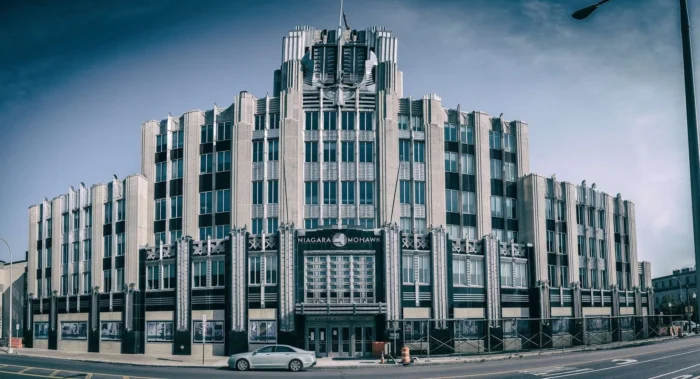
Timeline and Peak Years
The Art Deco period runs roughly from 1925 to 1940. Its peak years matched the economic boom of the late 1920s and early 1930s. Art Deco architecture wasn’t just a style—it was a language of optimism spoken in steel, glass, and stone. The movement captured the spirit of the Jazz Age with its love of innovation, embrace of the machine age, and unshakeable belief that the future would be more beautiful than the past.
The Construction Boom
In New York alone, between 1925 and 1935, over 200 major Art Deco skyscrapers rose from Manhattan’s bedrock. Each one told a story of ambition. Architects and developers saw the city not as it was, but as it could become. Giuseppe Romano, the Chrysler Building’s construction foreman, kept a diary throughout the building’s construction. He noted how pedestrians would stop daily to crane their necks upward, watching the metallic spire take shape against the sky. “They look at it like it’s magic,” he wrote in 1929, “and maybe it is.”
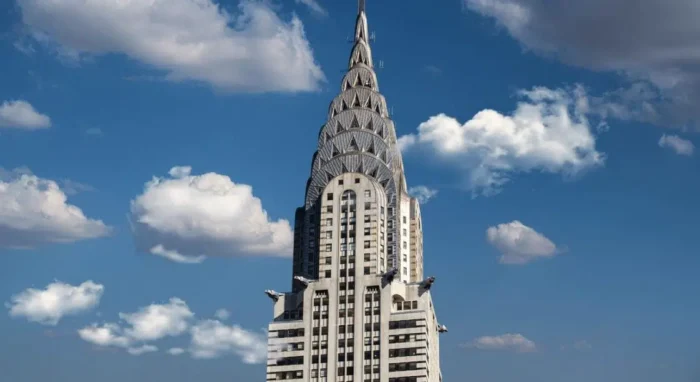
What makes a building Art Deco style?
To understand what transforms brick and mortar into Art Deco architectural style, imagine walking down Fifth Avenue on a crisp October morning in 1931 with acclaimed architect Raymond Hood. As he points toward the recently completed RCA Building, his eyes light up with excitement. “See how the building steps back as it rises?” he gestures. “That’s not just following zoning laws—that’s creating a mountain of light and shadow, a vertical landscape that changes with every hour of the day.”
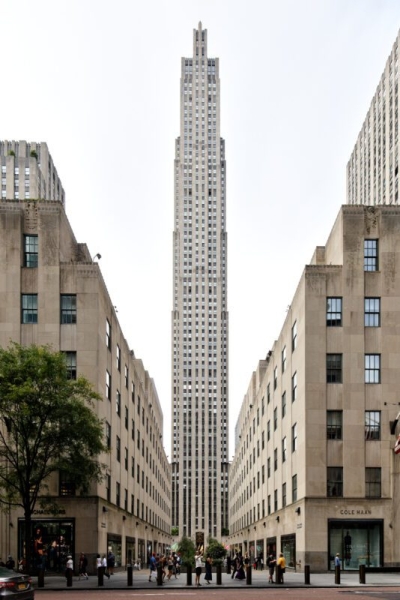
Philosophy Behind the Design
Art Deco design elements come from a philosophy that married function with fantasy. The style rejected the ornate flourishes of previous eras in favor of clean lines and bold geometry. Yet it never abandoned decoration entirely. Instead, it reimagined ornamentation as part of the building’s structure. The geometric patterns that define Art Deco buildings aren’t merely applied to surfaces—they’re woven into the very DNA of the design.
The Craftsman’s Perspective
Elena Vasquez, a young artist who worked on decorative metalwork for the Eastern Columbia Building in Los Angeles, would arrive at the workshop before dawn. Her hands already anticipated the feel of copper and bronze as she shaped stylized sunbursts and angular florals. “The patterns had to feel like they were growing from the building itself,” she remembered decades later, “not like wallpaper stuck on afterward.”
Core Design Elements
The defining characteristics include:
- Vertical emphasis that draws the eye skyward
- Stepped or zigzag profiles that create dramatic silhouettes
- Rich materials like marble, bronze, and colored glass
- Stylized motifs inspired by everything from Egyptian art to industrial machinery
- Bold color contrasts and metallic accents that catch and reflect urban light
What are the key features of Art Deco buildings?
Dr. Sarah Williams, an architectural historian who spent her career studying famous Art Deco buildings, often tells the story of her first encounter with the Guardian Building in Detroit. She was twelve years old, visiting the city with her grandmother in 1967, when they stepped into the building’s lobby. “I felt like I had walked into a jewel box,” she recalls. “Every surface seemed to glow—the Pewabic tiles, the bronze elevator doors, the way the light cascaded down from the vaulted ceiling like liquid gold.”
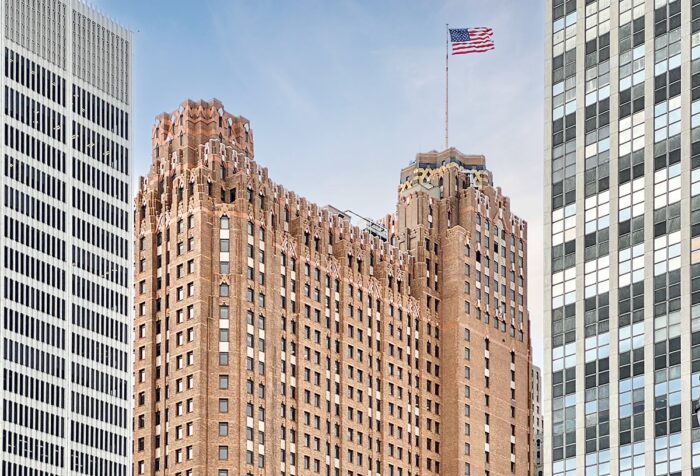
Layered Visual Experience
The key features of Art Deco buildings reveal themselves in layers. The first thing visitors notice is often the verticality—the way these structures seem to defy gravity, reaching upward with spiritual determination. But look closer, and you discover the intricate interplay of light and shadow created by setbacks and projections.
The Window Washer’s View
James Morrison, a window washer who spent thirty years cleaning the facades of Manhattan’s Art Deco towers, developed an intimate knowledge of how these buildings interacted with light throughout the day. “The Chrysler Building at sunrise,” he would tell anyone who would listen, “that’s when you really see what those architects were thinking. The whole building becomes like a prism, breaking up the light and throwing it back at the city in a thousand different ways.”
Signature Facade Elements
The Art Deco facade design typically features:
- Crown-like tops that create distinctive skyline silhouettes
- Ribbon windows that wrap around corners
- Decorative spandrels between floors
- Entrance portals that function as theatrical stages
- Integration of sculptural elements that tell stories of progress and aspiration
- Use of new materials like stainless steel and plate glass in innovative ways
These features weren’t just aesthetic choices—they reflected a shift in how architects thought about buildings’ relationship to their urban context.
How do you identify Art Deco architecture?
Learning to identify Art Deco architecture is like developing a new sense—once you know what to look for, you see it everywhere. Maria Santos, a tour guide who has led walking tours through Miami’s Art Deco Historic District for over two decades, has watched thousands of visitors experience this moment of recognition. “There’s always that instant when it clicks,” she explains, standing in front of the Colony Hotel on Ocean Drive. “Someone will be looking at all these buildings we’ve passed, and suddenly they’ll point to one and say, ‘That’s Art Deco!’ They’ve learned to see the rhythm.”
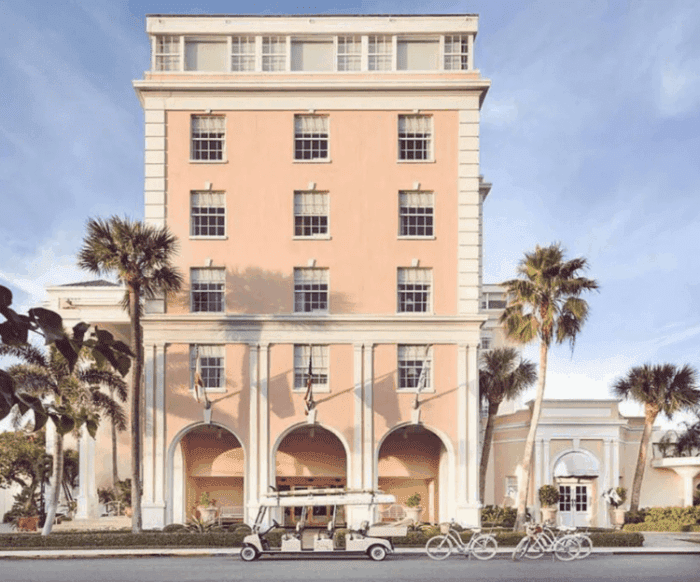
Reading the Silhouette
The Art Deco architecture characteristics create a visual vocabulary that speaks of speed, progress, and geometric precision. Start with the silhouette—Art Deco buildings often have a distinctive stepped profile, like a series of boxes stacked in ascending order. This “ziggurat” form wasn’t just stylistic; it was a response to zoning laws that required setbacks to ensure light reached the street level.
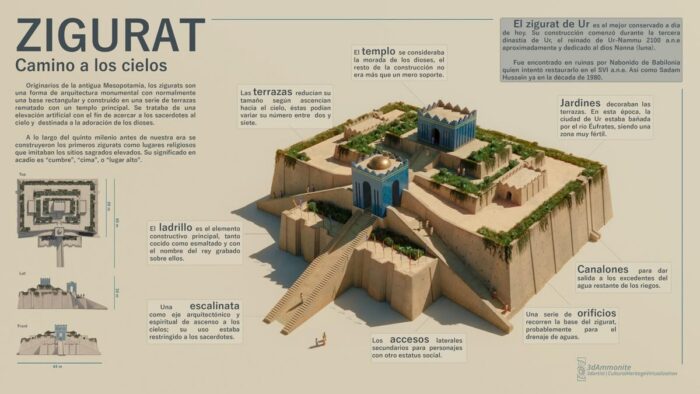
The Role of Color
Color plays a crucial role in identification. While many people associate Art Deco with neutral tones, the style actually embraced bold contrasts. The Paramount Theater in Oakland, California, tells this story beautifully through the memories of Patricia Chen, who worked as an usher there in 1973. “At night, when all the neon was lit, the building looked like it was alive,” she recalls. “The turquoise and gold details would glow against the darker base, and you could see that building from blocks away—it called to you.”

Essential Identifying Elements
Look for these identifying elements:
- Stylized natural motifs—sunbursts, flowers, birds—rendered in geometric form
- Strong horizontal and vertical lines that create visual tension
- Corner windows that wrap around building edges
- Metallic details, especially in bronze, brass, or chrome
- Typography and signage integrated into the architectural design
- Geometric patterns that appear random but follow mathematical principles
Why is Art Deco architecture important?
The importance of Art Deco architecture becomes clear when you understand its role as a bridge between eras. Robert Kim, now in his eighties, grew up in the shadow of the Hoover Dam, one of the most significant Art Deco engineering projects ever completed. His father worked on the dam’s construction, and young Robert would often accompany him to the site. “Seeing that massive concrete structure rise from the desert,” he remembers, “with all its clean lines and angular power stations, I understood that we were witnessing the future being born.”
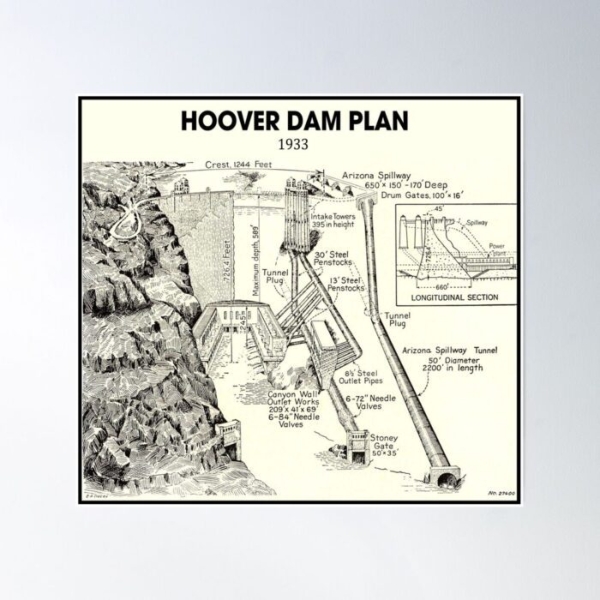
Cultural and Economic Impact
Art Deco’s importance lies not just in its aesthetic contribution, but in its role as the visual language of modernization. These buildings embodied the optimism of the machine age while maintaining a human scale and decorative richness that purely functionalist architecture would later abandon. They proved that progress didn’t have to be austere, that efficiency could be beautiful.
The economic impact was equally significant. The construction boom that accompanied the Art Deco movement provided employment for thousands of craftspeople, from metalworkers to glaziers to terrazzo specialists. Anna Kowalski, whose Polish immigrant grandfather worked as a stone carver on several New York Art Deco projects, still has his tools and sketches. “He would tell me about the pride he felt carving those stylized eagles and geometric borders,” she says. “He wasn’t just making a living—he was helping to create monuments.”
Global Influence and Legacy
Art Deco’s global influence cannot be overstated:
- It established America as a leader in architectural innovation
- Created a visual identity for the modern city
- Influenced product design, fashion, and graphic arts
- Demonstrated that mass-produced elements could still be beautiful
- Preserved craft traditions within industrial processes
- Shaped public expectations about what buildings should express about their society
What geometric patterns are used in Art Deco design?
The geometric patterns used in Art Deco design tell the story of a civilization falling in love with its own capability for precision and beauty. Dr. Michael Torres, a mathematician who has spent years analyzing the geometric principles underlying Art Deco patterns, often begins his lectures with a slide of the lobby floor in Detroit’s Fisher Building. “This isn’t just decoration,” he explains to his students, pointing to the intricate marble inlay patterns. “This is visual mathematics—symmetry, repetition, and proportion working together to create something that speaks to both our logical and aesthetic sensibilities.”
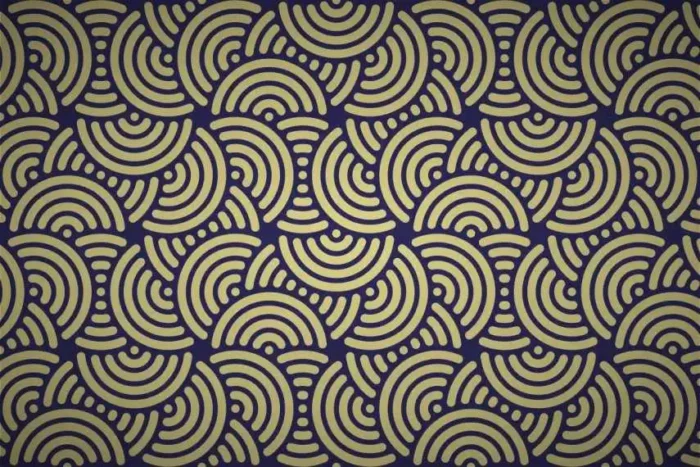
Diverse Sources of Inspiration
The patterns draw inspiration from diverse sources: ancient Egyptian art, Native American textiles, the forms of modern machinery, and the emerging science of crystallography. Charles Harrison, who worked as a draftsman for architect Timothy Pflueger in San Francisco during the 1920s, kept detailed sketches of pattern development. His notebooks reveal the painstaking process of translating these influences into buildable designs.
“We would spend hours working out the proportions,” Harrison wrote in 1928. “A sunburst pattern that looked perfect on paper might feel overwhelming when executed in bronze on a twelve-foot door. We had to understand not just how patterns looked, but how they felt—how they would affect someone walking past them every day for decades.”
Common Pattern Types
The most common geometric patterns in Art Deco architecture include:
- Zigzag patterns that suggest lightning, energy, and forward motion
- Sunburst motifs that radiate from central points like stylized suns
- Chevron patterns that create visual rhythm and movement
- Stylized florals reduced to their essential geometric forms
- Angular spirals that suggest both organic growth and mechanical precision
- Stepped patterns that echo the building’s overall form
- Fountain or fan shapes that suggest abundance and celebration
Function Beyond Decoration
These patterns weren’t randomly applied—they served specific architectural functions, creating visual transitions between different materials, directing the eye toward entrances, and helping to articulate the building’s structural logic.
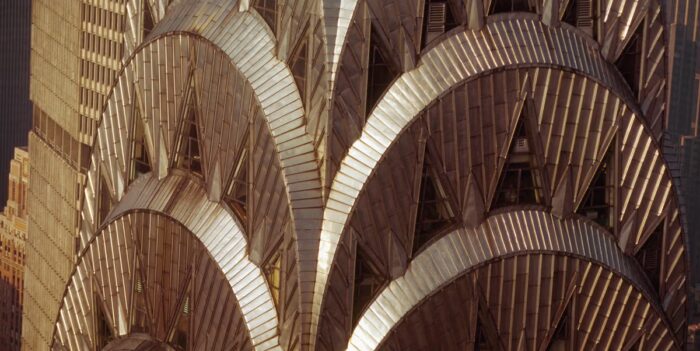
The legacy of Art Deco architecture extends far beyond its original era. Today, architects and designers continue to mine its rich visual vocabulary, finding new ways to apply its lessons about decoration, proportion, and the relationship between form and meaning. The buildings themselves have become beloved landmarks, their preservation often sparking passionate community campaigns that demonstrate how deeply this architecture has embedded itself in our collective consciousness.
The story that began with elevator operator Thomas Chen continues today in every restored Art Deco lobby, every carefully maintained neon sign, every contemporary building that borrows a geometric pattern or a bronze detail from this golden age of American architecture. These structures remind us that buildings can be more than mere shelter—they can be expressions of our highest aspirations, monuments to human creativity, and bridges between our past and our future.
Art Deco architecture’s greatest achievement may be its demonstration that beauty and functionality need not be enemies, that the modern world could embrace both efficiency and elegance. As cities around the world grapple with questions of development and preservation, the enduring appeal of these Jazz Age monuments offers valuable lessons about creating architecture that serves not just practical needs, but spiritual ones as well—buildings that make us feel, as young Thomas Chen did in that Chrysler Building elevator, that we are part of something larger and more beautiful than ourselves.
Tags: Architectural HistoryArchitectural StyleArt Deco architectural styleArt Deco ArchitectureArt Deco architecture characteristicsArt Deco buildingsArt Deco characteristicsArt Deco design elementsArt Deco facade designArt Deco skyscrapersfamous Art Deco buildingsgeometric patternsgeometric patterns architectureJazz Age architectureUrban Design

Luca Moretti
Luca Moretti is a content strategist with a foundation in urban design and architecture. Based in Milan, he focuses on writing that bridges aesthetics, material culture, and everyday spatial experiences.
